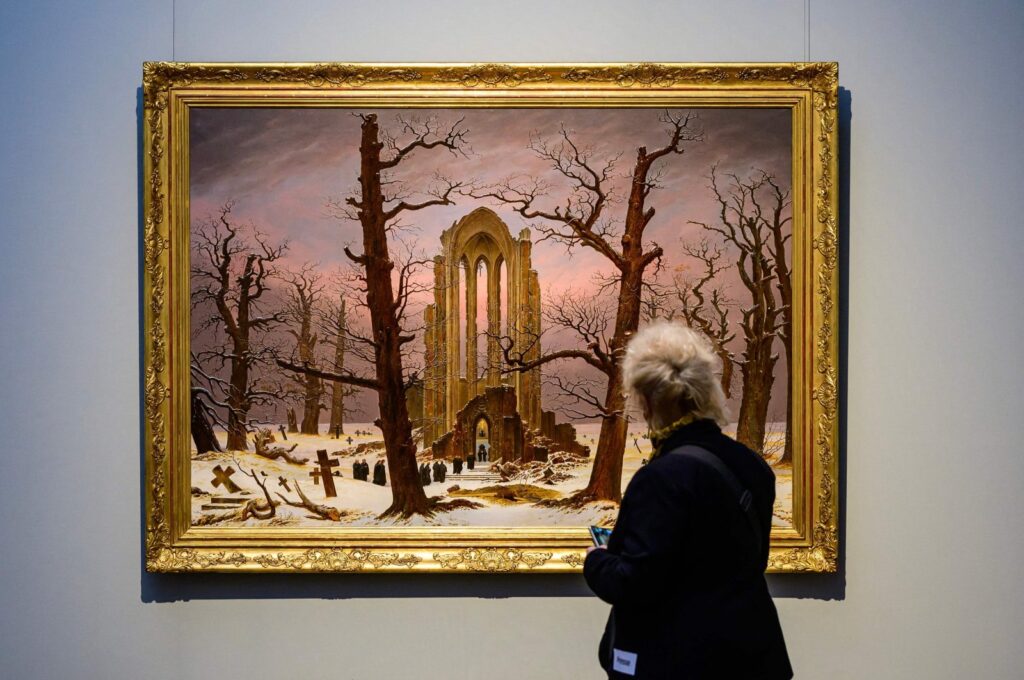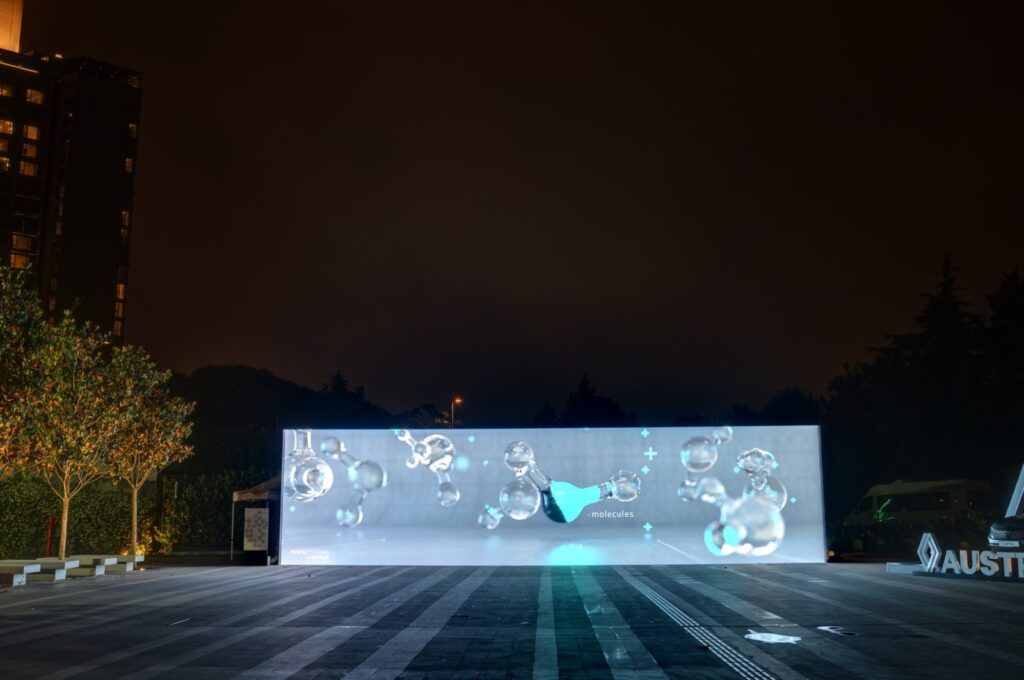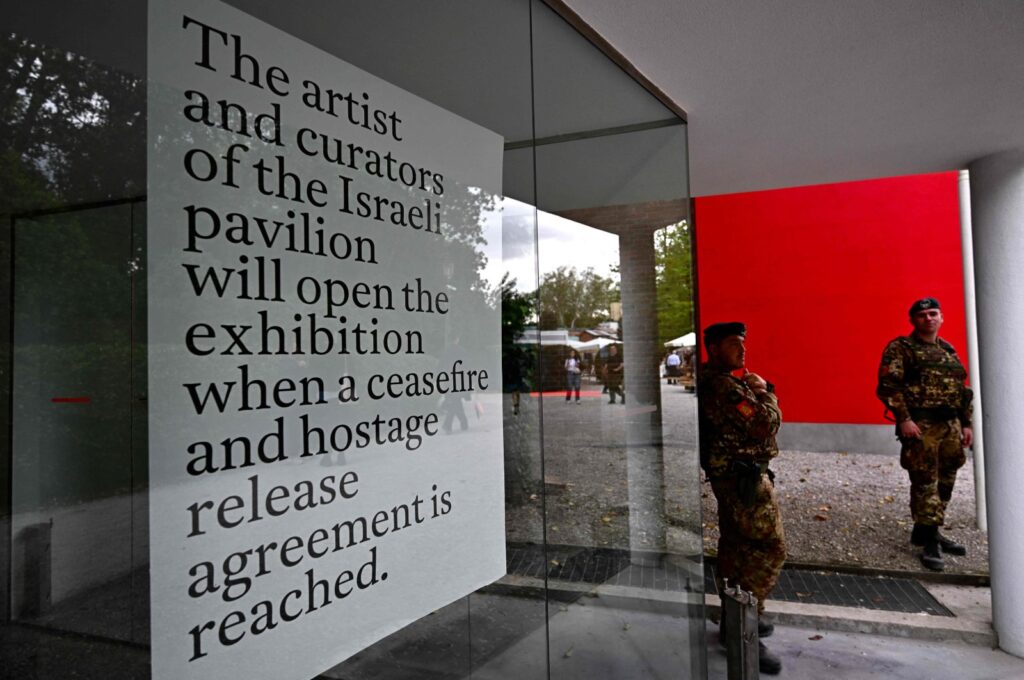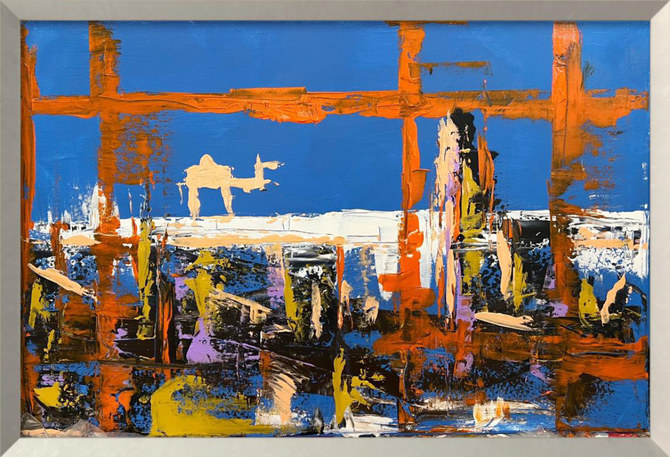
Rea McNamara
TORONTO — Like other contemporary art biennials, the Toronto Biennial of Art was delayed a year due to the pandemic. While its ambitiously chaotic inaugural 2019 edition created quite the splash, this year’s is a more sedate vibe check — which is understandable, since it’s one of the first large-scale art events to take place in Toronto after two years of isolating lockdown restrictions.
Drawing inspiration from the multilayered narrative histories of the city’s waterways to frame collaborative kinship models, the biennial’s curatorial team — led by prominent Indigenous curator Candice Hopkins — has amassed an exciting array of contemporary Canadian and international artists, with a focus on Indigenous artists. Here are the highlights.
Lawrence Abu Hamdan’s 45th Parallel at Mercer Union
The Turner Prize Winner’s film is ostensibly about the Haskell Free Library and Opera House, “the last of the little cracks” straddling the Canada-United States border. Its slow pan of public library interiors becomes a portal into the arbitrariness of and loopholes in national borders. Through monologues delivered by filmmaker Mahdi Fleifel, the film connects the library’s unique jurisdiction — it became a site for family reunions during Trump’s Muslim Ban — to other contested and far more fatal border zones. Abu Hamdan’s first major Canadian commission, 45th Parallel‘s dramatic theatricality benefits from its solo presentation at Mercer, a contemporary arts space situated within a renovated early 20th-century movie theater in the city’s west end.

Nadia Belerique’s HOLDINGS at 72 Perth Avenue
From a distance, the stacked white plastic drums that comprise Belerique’s installation resemble the distinctive rolls of ocean waves. Step closer, and these worn shipping containers, often used by the Toronto artist’s family to ship food and gifts to relatives in the Azores, hold assemblages composed of seemingly throwaway personal effects and photographs. The installation, entitled HOLDINGS, offers a peek into the talismanic weight of the objects we carry. Last seen in the New Museum Triennial, Belerique’s architectural creation is a bold addition to her body of photo and installation-based work, which traces the connections between image, memory, and personal encounter.


Andrea Carlson’s “Never-Ending Monument” and “Cast a Shadow” at 72 Perth Avenue
This year, one of the Biennial’s main sites is 72 Perth Avenue, a former Pentecostal Church in the city’s west end now slated for redevelopment. So it’s rather apt that two works from the Chicago-based Ojibwe artist make the most of the church’s skylight. The hand-carved wooden beams of “Never-Ending Monument” — co-commissioned by the 2022 Front International — can be traced back to Wisconsin’s “Man Mound,” the only remaining effigy mounds in the United States. Installed in front of Carlson’s multi-panel drawing, “Cast a Shadow,” these Great Lakes effigies connect with other Biennial works in the ways that they explore the Indigenous and decolonial histories of our waterways.


ᑕᑯᒃᓴᐅᔪᒻᒪᕆᒃ Double Vision: Jessie Oonark, Janet Kigusiuq, and Victoria Mamnguqsualuk at the Textile Museum of Canada
Curated by the biennial’s co-curator Candice Hopkins, Double Vision feels like its lodestar, bringing together themes of kinship, nature, and craft. Focusing on a Nunavut artistic dynasty’s work in nivinngajuliaat, Inuit applique wall hangings, these textiles, shown alongside drawings and prints, are handled with warmth and care. With a sharp focus on later works from mother Oonark, and her daughters, Kigusiuq and Mamnguqsualuk — a key standout is Kigusiuq’s pulsating color-field collages — the pieces add to broader art-world recognition of the vital expressions of older women artists.




Jeffrey Gibson’s I AM YOUR RELATIVE at MOCA
Graphic technicolor posters and stickers cover the interiors and exteriors of MOCA’s lobby, extolling Indigenous land ownership and other dimensions. Like artists such as Allen Ruppersberg and John Giorno, Gibson emblazons the public environment with the vernacular language of mass culture — specifically, that of the infographics that saturate our surroundings. Visitors can lounge in pillowed cubby-like pods; kids are encouraged to read inclusive children’s books from the pod’s bottom shelves. According to the work’s didactics, the queer Mississippi Choctaw-Cherokee interdisciplinary artist pulls from “aesthetic and material histories drawn from Indigenous cultures of Americas” to present a “visual archive that prioritizes Indigenous, Black, Brown, and queer voices.” The site-specific installation is a sumptuously tactile and visually rich in-person experience for viewers weary of the pandemic’s social distancing.


Brian Jungen at 5 Lower Jarvis
Since the late 1990s, the internationally acclaimed Canadian artist has stretched, layered, and stitched deconstructed Air Jordan sneakers into biomorphic sculptural forms harkening back to traditional Indigenous headdresses and masks. At the biennial’s 5 Lower Jarvis exhibition site, two recent works from the ongoing series take on a new form: the 17th-century plague doctor mask. Individually encased in two glass vitrines, the sharp-beaked masks connect the Black Death to COVID-19 and the rampant production and commodification of FFP2 and KF94 masks. They stand out as the rare biennial works to directly contend with the pandemic’s collective trauma and grief.


Amy Malbeuf at Arsenal
One thread running through the Biennial is how contemporary Indigenous artists refashion traditional craft. The Rich Lake, Alberta-born artist frequently incorporates labor-intensive crafts like caribou hair tufting and beadwork into wearable art, exploring her Métis identity. The process of hide tanning forms the basis of Malbeuf’s “Kahikiyaw kikway (All of Everything),” on view at Arsenal. “Kahikiyaw” shifts away from embellishment to revel in the unadorned process of creating the home-tanned hides. Malbeuf will show the wearable works at the upcoming Indigenous Fashion Week, and the artist will eventually gift each garment during the exhibition’s run.


Eduardo Navarro’s “Wind Oracle” at Colborne Lodge, High Park
The Argentinian artist’s brightly colored steel sculpture stands on a grassy knoll near a pollinator garden. Its form evokes the old windmills that dot Argentina’s pastures and perhaps even the geometric surrealism of Argentinian artist and writer Xul Solar. Depending on the direction of the wind, a red triangular flag flits between “NO” and “YES,” allowing viewers to leave their decision making to the air currents. The site-specific work, part of a wider outdoor commissioning series in response to COVID-19 restrictions, brings pseudo-compass-like navigation to the city’s largest public park.


Denyse Thomasos
Like the Double Vision exhibition, this trio of ghostly early 1980s works by the late Trinidadian-Canadian painter reflects a broader Canadian institutional inquiry into the under-recognized work of Indigenous and Black Canadian artists. These gestural charcoal on paper works — apparently created while Thomasos studied at Sheridan College in Oakville, near Toronto — are precursors to the large, semi-abstract monochrome paintings of prisons and slave ships currently featured in the Whitney Biennial. With a forthcoming retrospective of Thomasos’s work coming to the Art Gallery of Ontario this October, we’re witnessing a reassessment of an innovator of Black abstraction.



Camille Turner’s “Nave” at the Small Arms Inspection Building
Camille Turner’s three-channel projection “Nave” is an assured scaling of the Jamaican-born, Los Angeles-based artist’s investigations into Canada’s buried slave trade history. Partly filmed in a Toronto church and Newfoundland’s rugged cliffs, the immersive installation follows the artist’s longstanding futurist Afronautic Research Lab performance alter-ego, which conjures a Middle Passage ancestor from a church’s nave. Amid a soundscape of propulsive hand drumming and lapping Atlantic waves, the ancestor, face painted red and blue, is Anansi-like in her beach movements; she potentially signifies the human cargo carried in the slave ships built in the province. Like Isaac Julien’s WESTERN UNION: Small Boat, this video piece balances the multilayered aesthetics and histories of displacement.


Courtesy: hyperallergic
The post Indigenous Artists Take Center Stage at the Toronto Biennial of Art appeared first on The Frontier Post.








